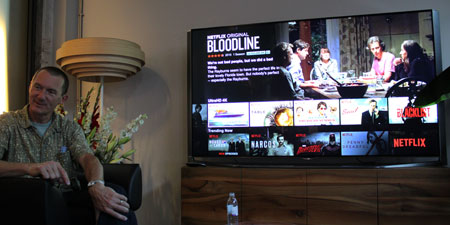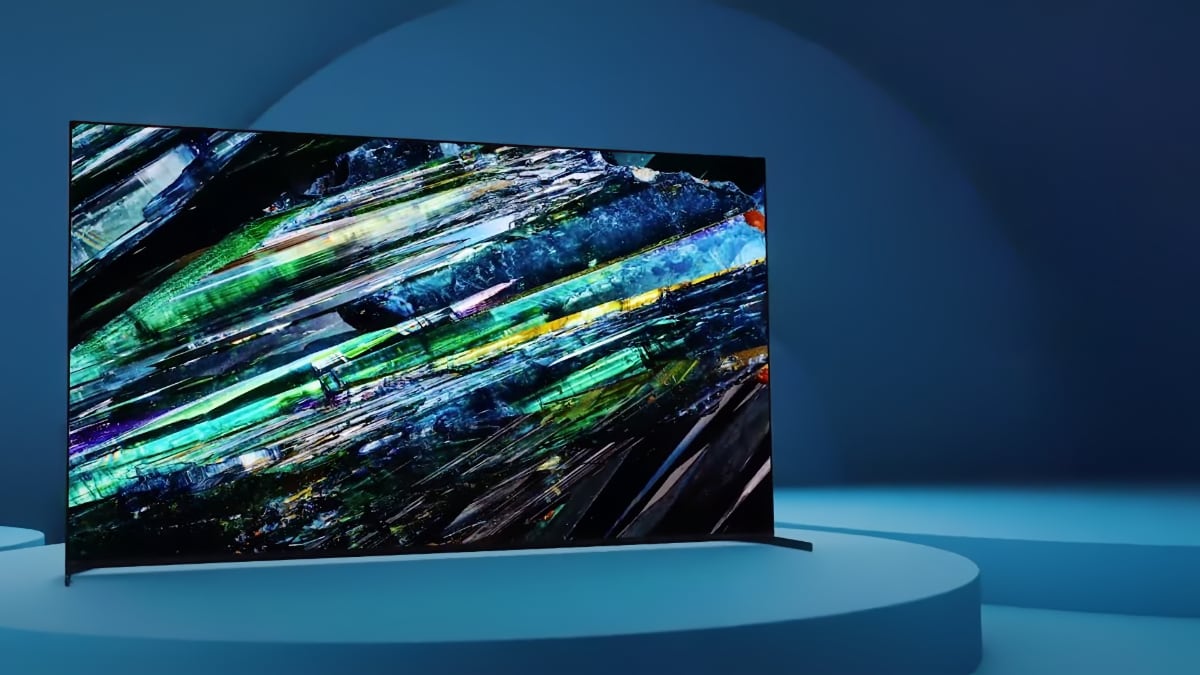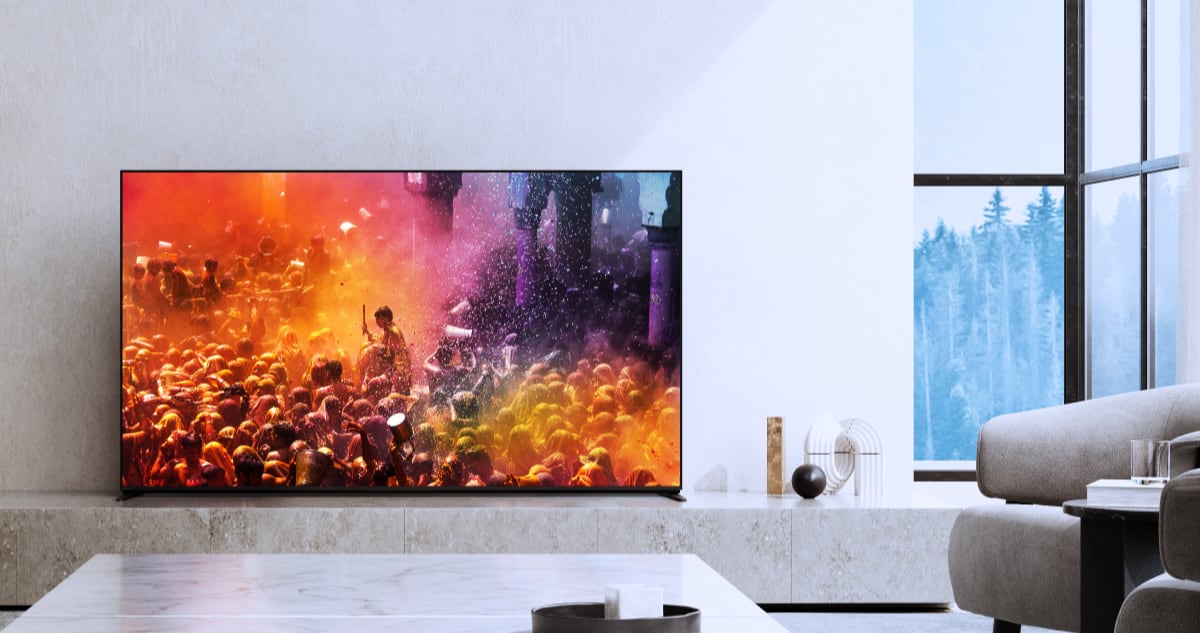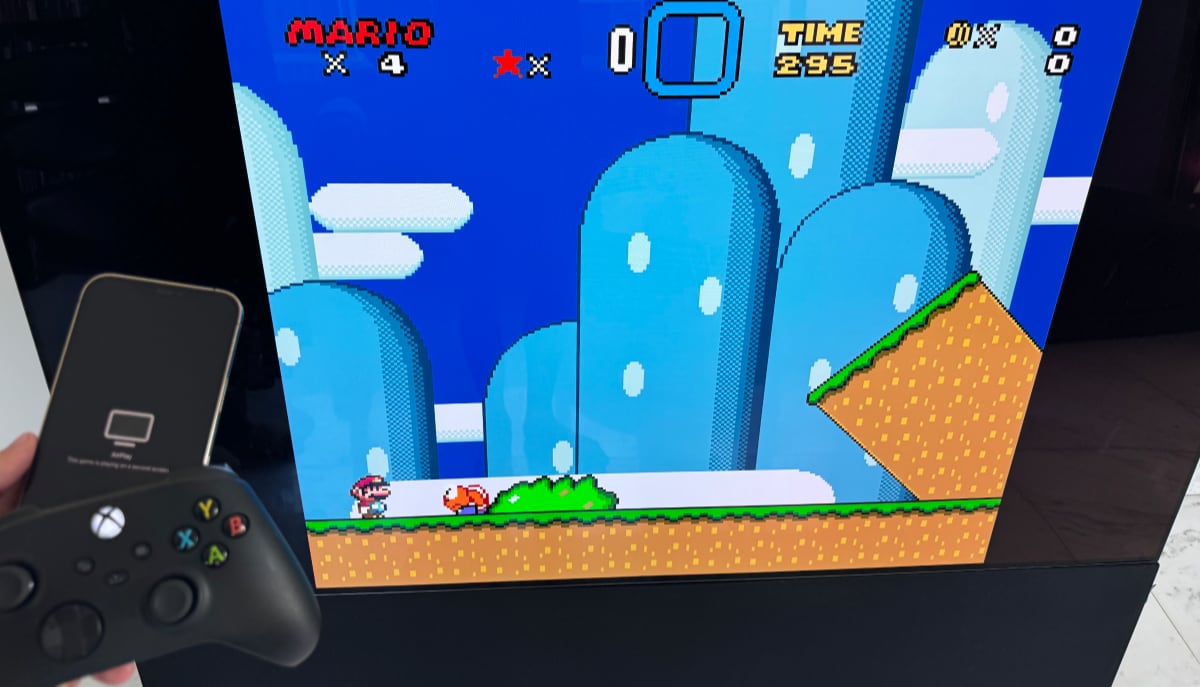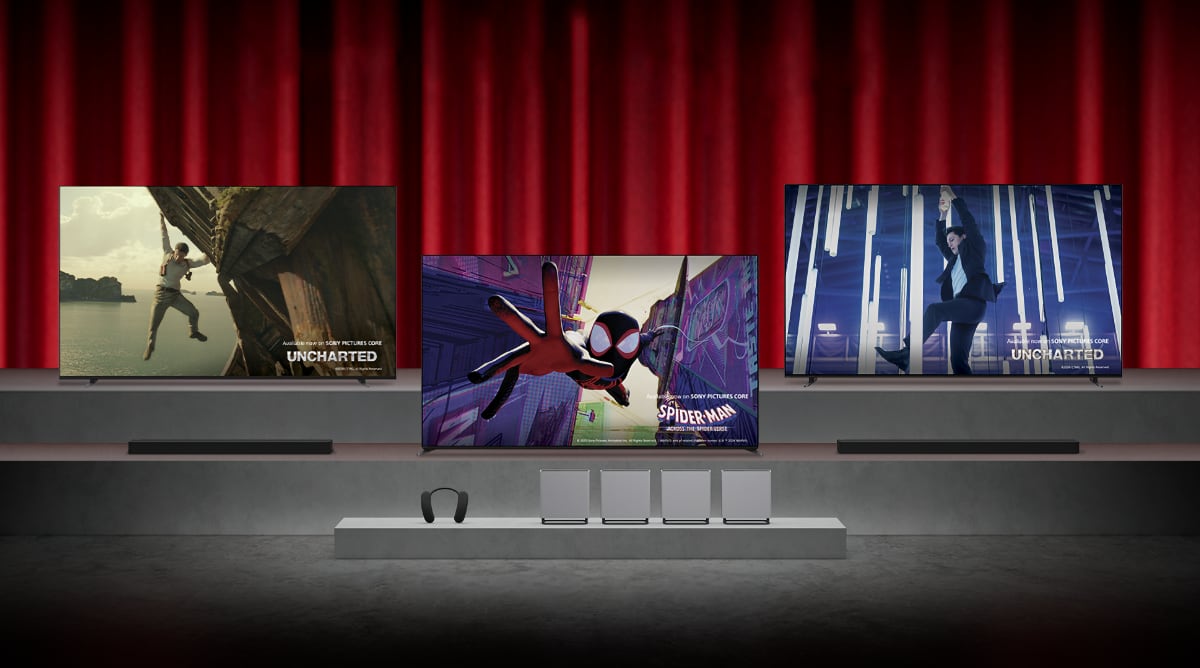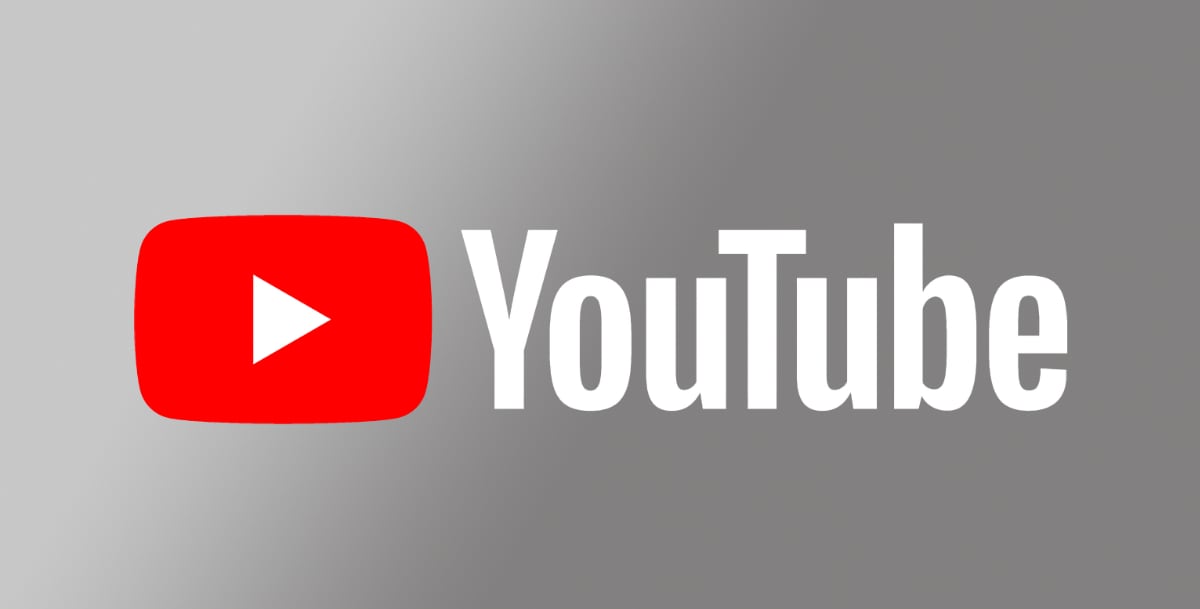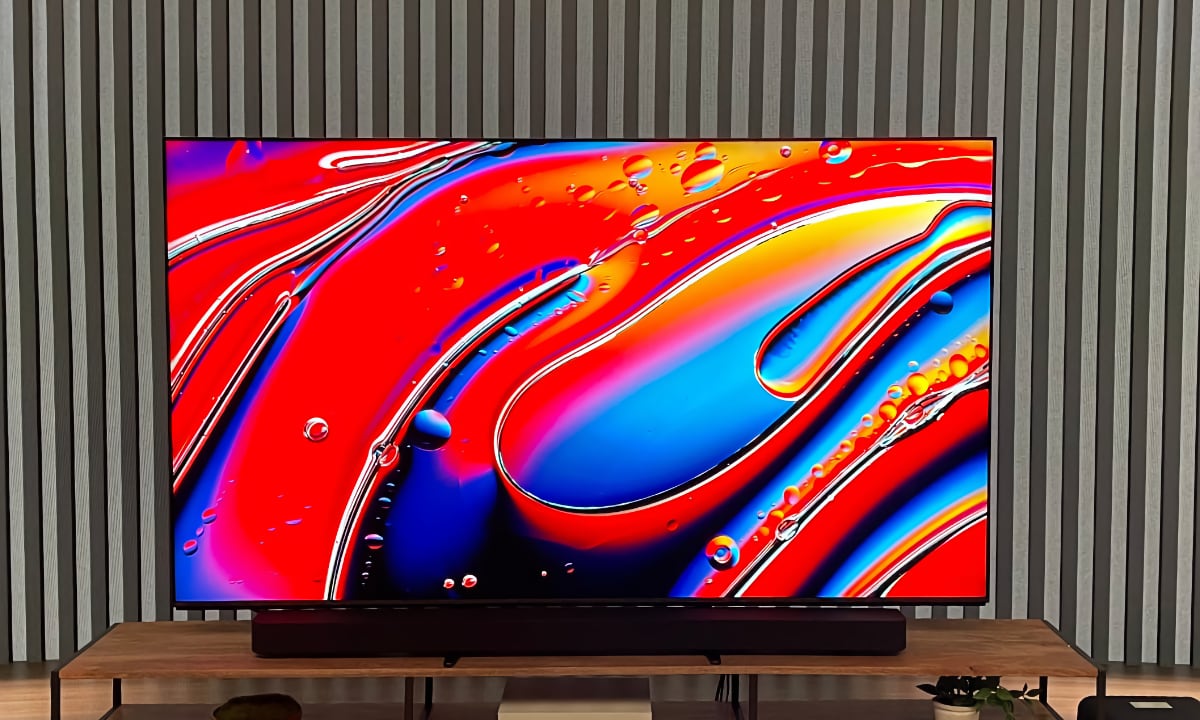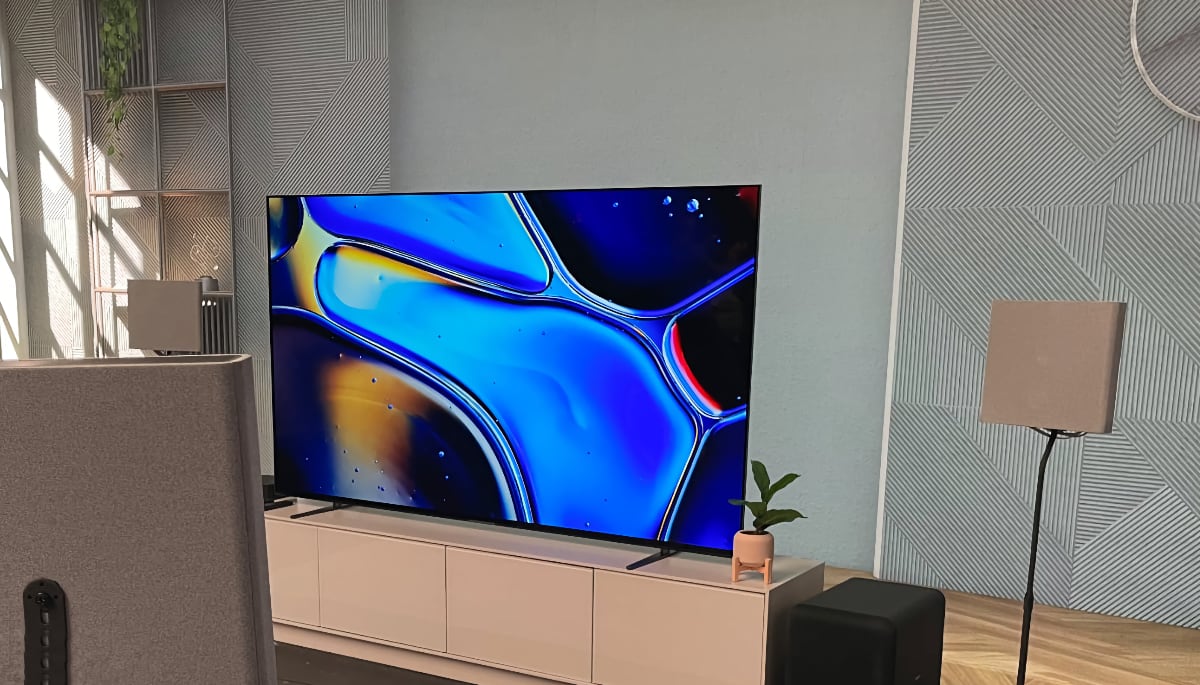Shortly before IFA started, a new alliance consisting of seven giants came together with a stated goal of developing a next-generation video format. Netflix is one of the members of the Open Media Alliance and we caught Neil Hunt, Chief Product Officer, to discuss the alliance’s work. He also told us that we will likely have to wait until early 2016 to see Netflix's HDR streams.
The internet will drive 4K video
Neil Hunt has been with Netflix almost from the beginning. In the early days, Netflix made most of its money from renting out DVDs but today the company is best known as a streaming service. Neil is in charge of the “product” and is responsible for many of the technical and engineering decisions.
For the session, Netflix had brought an 84” Ultra HD TV to talk about 4K and where the market is heading. The streaming giant already offers a handful of TV series in 4K resolution and it will soon start adding original movies. Neil points out that the team is still working on optimizing video compression and that they very recently introduced a new “streaming layer” that delivers 4K streams at 17 Mb/s with HEVC, up from the previous 15.6 Mb/s 4K layer.
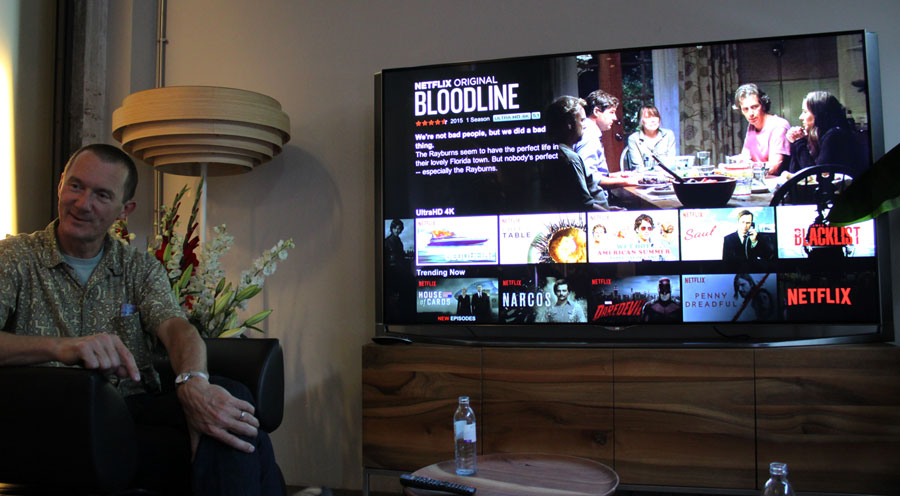
Netflix firmly believes that the 4K revolution will happen on the internet and not with a new disc format. The company has offered 4K streams for one and a half year so one could be inclined to agree but 4K is obviously not the final destination. The industry is also working on HDR (high dynamic range), HFR (high frame rate), wider color spaces and other things, which Neil told us about the last time we met him in January.
HDR from Netflix will likely not happen in 2015
So when can we experience Netflix’s HDR? Probably not in 2015, Neil Hunt tells us. HDR will instead be available in early 2016 and we can expect to hear more about the plans during CES 2016 this January. However, Neil can confirm that Marco Polo will be one of the first TV series in the new format and that other TV series have been produced with HDR in mind. By that time, Netflix will likely bump the bitrate up to 18 Mb/s.
A talk about the Alliance for Open Media
To continue down the route that started with 4K, Netflix is looking to collaborations. The company is one of the members of the new Alliance for Open Media together with Amazon, Cisco, Google, Intel, Microsoft, and Mozilla. The alliance wants to create next-generation "video formats, codecs and technologies".
Specifically, the group wants to use Google’s current VP9 format and the new VP10 format, Neil confirmed. The VPx video compression format is free to use for everyone and the plan is to keep it free even with so many members’ contribution; several of whom have previously earned money from video patent royalties.
At the moment, Netflix and Amazon are using the competing HEVC codec to stream 4K quality to your living room TV. The new Ultra HD Blu-ray standard will also use HEVC. However, just a few months ago a new patent pool announced its entry with royalty payments that far exceeded most industry players’ expectations. There are even rumors about a third patent pool.

Neil would not confirm whether the Alliance for Open Media was set up as competitor to HEVC or not, but it is clear that it's one of the reasons why it was formed. Instead, Neil pointed out that most new video formats are optimized for high resolution content. HEVC was created to enable 4K and optimize HD but Netflix is hoping to be able to create a video format that can also reduce bandwidth requirements on smaller mobile displays.
Netflix intends to compete in every country of the world and will start entering Asia in a big way later this year. The plan is to enter every country within a few years but as Netflix enters less developed countries, it will have to prepare for a situation where internet connections in homes are slower and a situation where more people are connected via 3G/4G data connections with data caps. It will be a challenge for the entire industry.
As streaming providers hope to replace disc formats and TV cables, they will have to deal with this issue. That is why one of the alliance’s goals is create a new video format that can compress video effectively for any screen size and resolution.
The industry is also working on improving picture quality at the high end. Netflix is part of the UHD Alliance that is trying to define a "premium" specification for 4K and HDR to ensure that TV manufacturers and other player do no dilute the terms. Neil seemed optimistic about the prospects of this. The first concrete results will be presented soon.
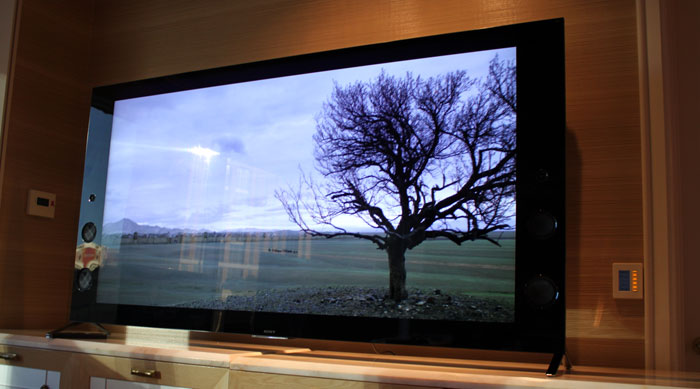
Netflix is moving fast and internet technology allow them to do so. Streaming services are not limited by the same bandwidth limitations that traditional TV broadcasters face. The shelf space on the internet is almost infinite and players like Netflix can switch between compression formats – or use more than one – if they want to. Movies are TV series can be available in several formats on the server and the device on the other end will simply ask for the format that it can decode. It is not uncommon that any given movie is available in over 20 versions (resolution, video compression, bitrate etc.). This stands in sharp contrast to traditional broadcast networks that need to shut something down in order to migrate to something new.
Therefore, it is only natural to wonder; what will Netflix do next? Will they turn to sports? Game streaming? No, not according to Neil, but he stresses that he is not responsible for content-related decisions. Netflix is looking at VR (virtual reality) but mostly as an experiment. Neil says that the VR industry must agree on a direction first.
Whatever Netflix chooses to do, the company must continue to innovate to stay ahead. They have already left the broadcasters in the dust but the future competitors are not traditional TV broadcasters. Today, Netflix has to compete with players that have the same technological advantages. Amazon is starting to match them in technology, picture quality, original TV series and movies, and maybe even distribution in the near future.
Recommendations on Android TV
Turn on your new Sony or Philips TV from the 2015 line-up or your Nexus Player box and you will see a row of icons at the top that Google’s “Android TV” is referring to as “recommendations”. The recommendations are driven by an engine that collects user data, for example about what you have watched in the past. The same thing happens on Amazon’s Fire TV, which is now one of the most popular media streamers in the US.
But where are all the recommendations from Netflix?
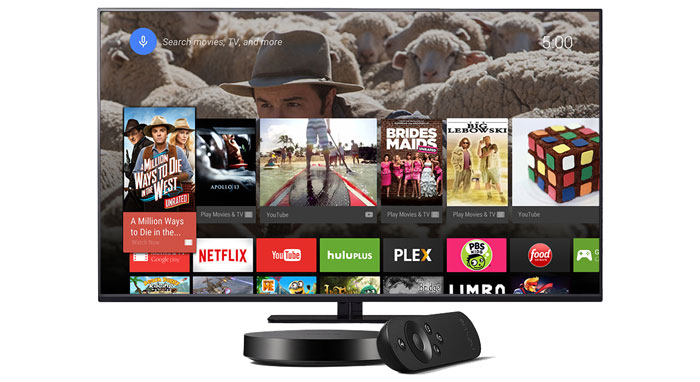
In hindsight we now know why Neil Hunt answered our question with a smile
It was, of course, a leading question. Our interview took place only a few days before Apple were to introduce the new Apple TV box that was rumored to feature "universal search" and Siri integration. We argued how it feels liberating to be able to say “Hey Siri, play Thriller by Michael Jackson" to for example an Apple Watch and have music play over the living room speakers via Apple Music. Why is it not possible to do this on a TV, we asked? Neil responded with a modest smile.
We now know that the new Apple TV box can do exactly that and that Netflix is included for Siri searches. Apple has not built a recommendations engine per se. They do not collect user data with the intent to present recommendations from many different services but is instead offering developers such as Netflix the tools to include their content in Siri searches. This distinction may very well be the reason why Netflix is collaborating with Apple and not Google.
User interface innovation is just beginning after years of experimentation on subpar Smart TVs. Netflix has repeatedly said that they want to make it as easy to turn on Netflix as it is to turn on a TV and watch TV channels. With new initiatives such as auto-play videos and quick start of the Netflix app, they are getting closer. And in hindsight we now know why Neil Hunt answered our question with a smile.

